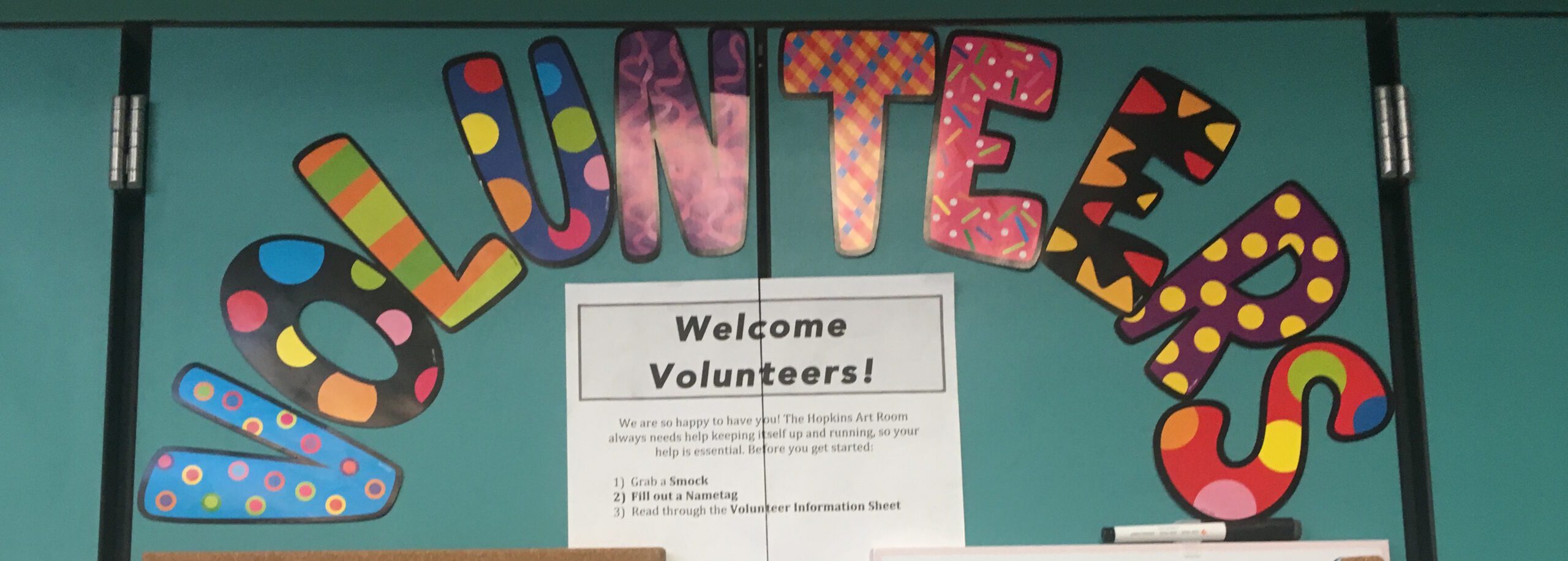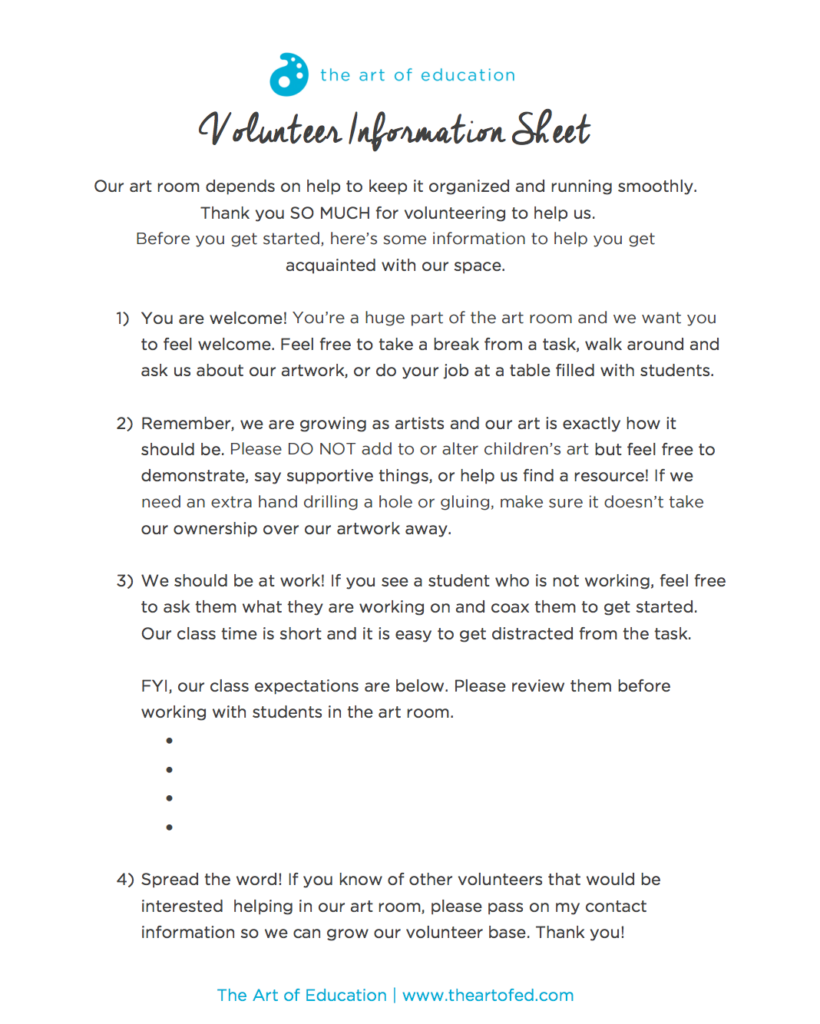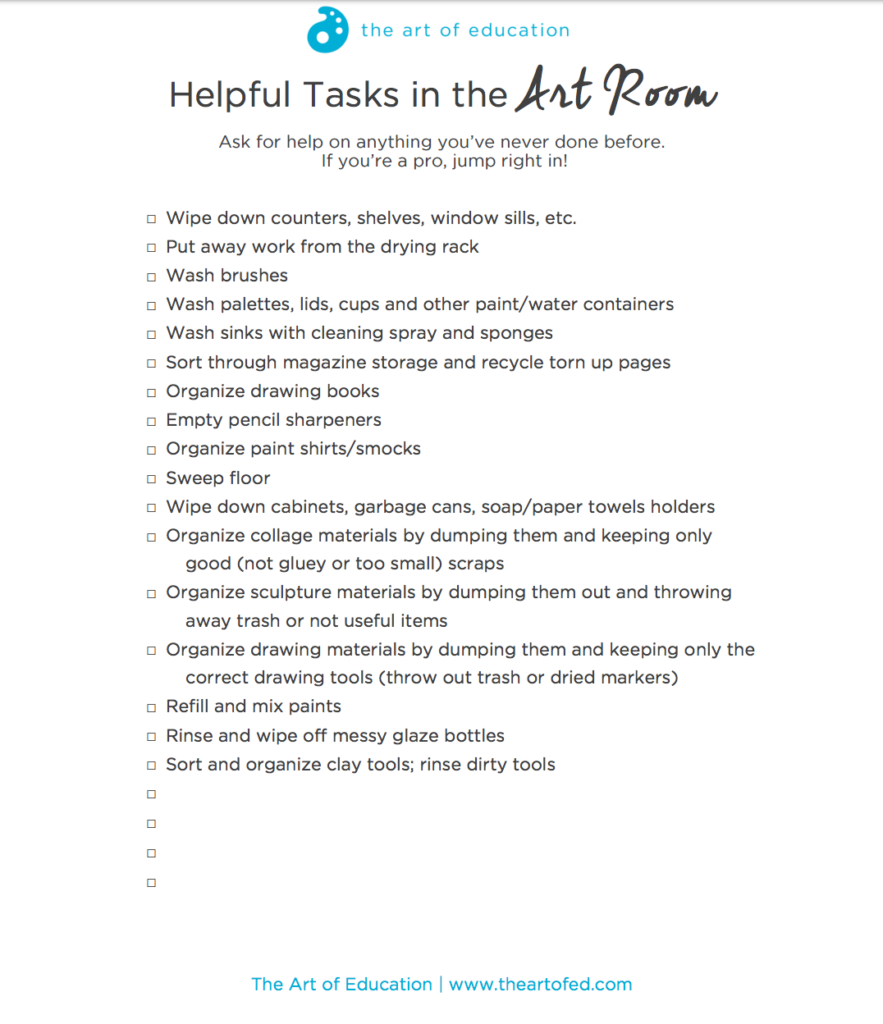My first year running a TAB classroom, I stayed until 7pm(!) most nights organizing stations, creating visuals, labeling drawers and cabinets, sorting artwork…the list was endless. At one point, I looked down at the box of red “cool stuff” I was refilling and realized I was misusing my time.
I knew other teachers had parents come in to help, but the thought of having someone in my room made me nervous.
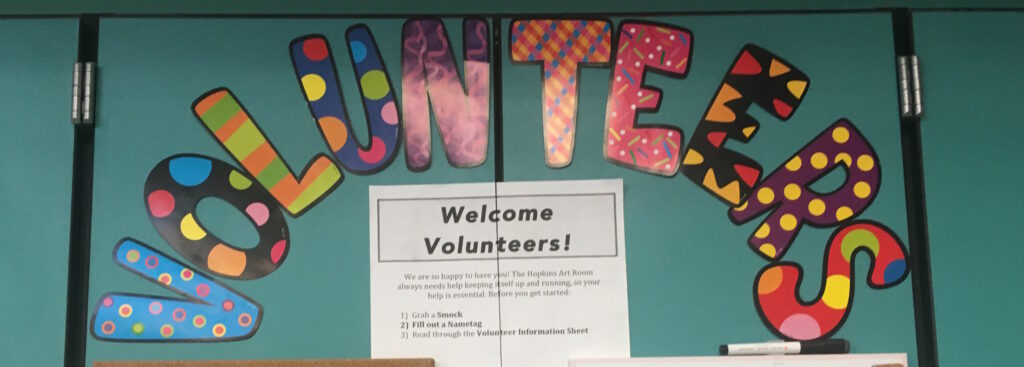
Having parents in your room can be intimidating; it’s often hard to know where to start and how to make it work for everyone involved. But there are amazing advantages to including volunteers, too! With a little organization and planning, inviting and managing volunteers in your art room can make an incredible impact–especially in a TAB classroom. If you’re looking for a way to break the ice, here are a few tips to help you take the first steps.
Start Small
If you work in a district with high parent involvement, start by asking for one volunteer per day, and then maybe one volunteer per class. It works better for everyone when you start at a place you can manage. Don’t feel like you need to have every parent who wants to volunteer in your classroom every week.
As time goes on, you can see what works best for you. If it seems like having one volunteer is enough, then stick with it. If you love the help, and think you can handle more, go for it. It’s all about what you’re comfortable with.
If you work in a district with less parent involvement, ask around! Ask the office, other teachers, or your school’s PTA if they have any go-to parents you can reach out to directly. Having even just one stellar volunteer can save you tons of time!
Get a Coordinator
Delegate the scheduling. Ask your PTA or a parent who already has a relationship with the school or art room to be your liaison. That way you can have someone who deals with logistics so you can spend your time planning what parents will actually help with instead of fielding emails.
Make sure you provide your coordinator with the district calendar so they can keep an eye out for schedule changes, such as half days or days off. Also, make sure you forward them emails about assemblies, field trips, and special events so they can make necessary changes to the master sign up. If you’re going to be absent, let them know so they can cancel your volunteers for the day.
My coordinator uses Sign Up Genius and keeps me (and my front office) updated with the volunteer schedule weekly. By keeping everyone in the loop, you can make sure parents are cleared to volunteer and your office knows you’re expecting guests.
The Volunteer Station
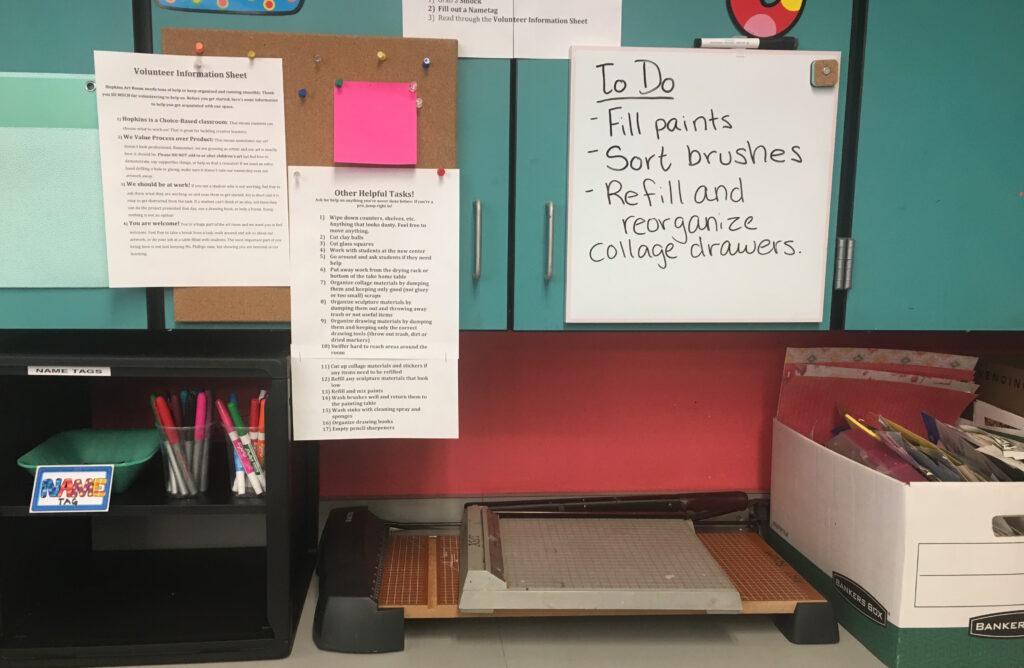
In the TAB classroom, stations are king, so to welcome parents to my art room I have developed a Volunteer Station. The Volunteer Station is a great place for parents to get set up and ready to go when they come to art class. Your volunteer station can be very simple and should include:
- Name tags and sharpies
- Adult smocks
- A welcome letter (with a few ground rules and things to know about volunteering in the art room)
Download the Information Sheet Now!
- A white board or clipboard for posting an editable To Do List
- A permanent list of tasks you’ll know you always need completed
Download the To-Do List Now!
- Tools such as a paper cutter, label maker, stapler, etc.
- A box of donated supplies to be sorted
- Work to be hung up (and supplies to hang it)
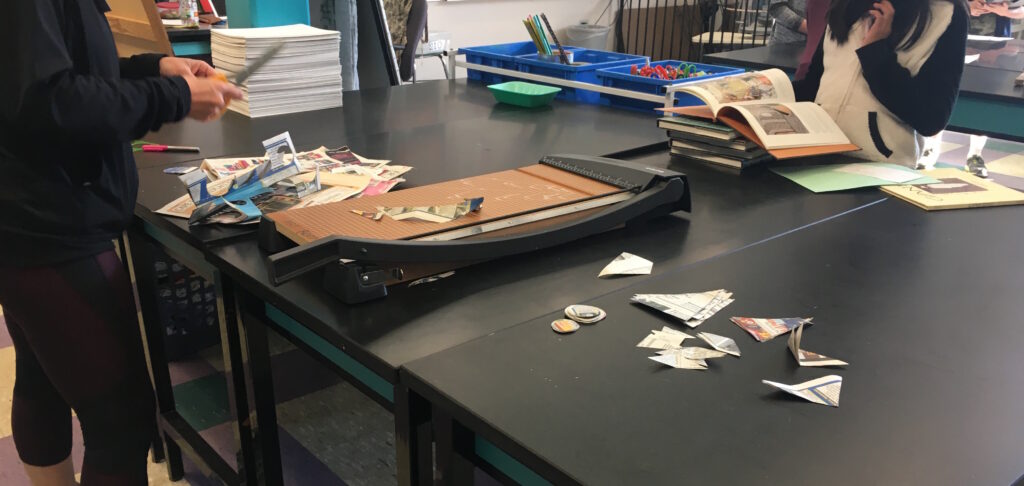
When you invite parents into your art room, it allows them to have front row seat to the amazing learning that’s happening in their child’s class. Having volunteers promotes your program in a way no newsletter can. So instead of worrying about getting started, jump in and see how volunteers can help you get more done!
How do you feel about inviting volunteers into the art room?
If you already have volunteers, what tips do you have for making it successful?
Magazine articles and podcasts are opinions of professional education contributors and do not necessarily represent the position of the Art of Education University (AOEU) or its academic offerings. Contributors use terms in the way they are most often talked about in the scope of their educational experiences.
